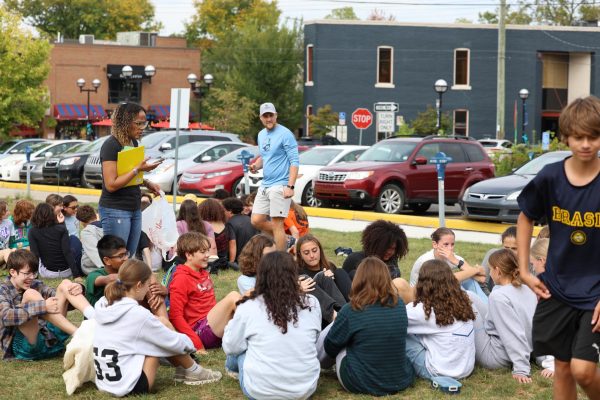Italian Art Made From Spaghetti and Marshmallows
Community High School students recreating Florence’s famous dome with flimsy foods.
On Nov. 28, 2017, Steve Coron’s fourth block Italian Art and Culture class participated in an activity to recreate the famous dome that sits on top of the Florence Cathedral in Italy. Coron decided to have his students build scale-model domes in similar conditions to what Italian designer Filippo Brunelleschi had to go through, constructing their domes out of flimsy materials: mini marshmallows and thin spaghetti.
Brunelleschi began work on the dome in 1446, constructing it with over 4,000 bricks. Brunelleschi left no building plans behind, so many architects believe the dome was built without any internal support systems. It was believed that the dome would not last for very long, however, it has been standing — with only a few restorations — since 1475.
“I wanted them to get a sense about how difficult it was to construct a dome at that time in history with the technology they had or didn’t have,” Coron said. Normally, Coron doesn’t like to use food to make art, but in this case the students ate the marshmallows and recycled the spaghetti used.
For the activity, students had to split into small groups to construct a dome that was 13 inches wide and 14 inches tall: matching the scale of the dome in Florence. To start, students completed a template drawing and worked up from there. Within 30 minutes the domes had to stand on their own.
Coron ran the activity for the first time last year, but changed the size of the marshmallows and thickness of the pasta in order to make this years’ results more successful. Students had to use their prior knowledge of the dome and insight of buildings in order to work together to construct a structurally sound dome.
“Some of the groups really nailed it,” Coron said. “Some started off really great, and it collapsed. Some started off really slowly but took their time and thought about it, and then in the last five minutes, they pulled it together.”
Coron believes that students learn best by doing and looking and touching. When students see, feel, and touch, they make a real application to what they’re learning. Rather than doing a worksheet to understand concepts, they use those concepts to make something. Coron wants his students to see the real life application of things they are learning in school because it makes everything more genuine.
“If you could see my face, I’m beaming,” Coron said. Activities such as this one — ones that make students work together with weird materials, figure out problems, work collaboratively, make things, be creative, and be innovative — subject students to differents parts of the artistic process. As a teacher, watching his students come together and make something as a group is very rewarding.
After the activity, the class came together to discuss what new things they learned about the dome just from trying to construct it themselves. Most of the class agreed that after the demonstration, they appreciate the dome even more because they truly understand what he had to go through in order to build it.
Many of the students in Coron’s class will be attending the school’s trip to Italy over Spring Break 2018. During this trip, they will visit Brunelleschi’s dome and, given the time, will climb to the top and see inside of the building they’ve been studying.








